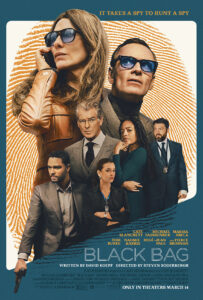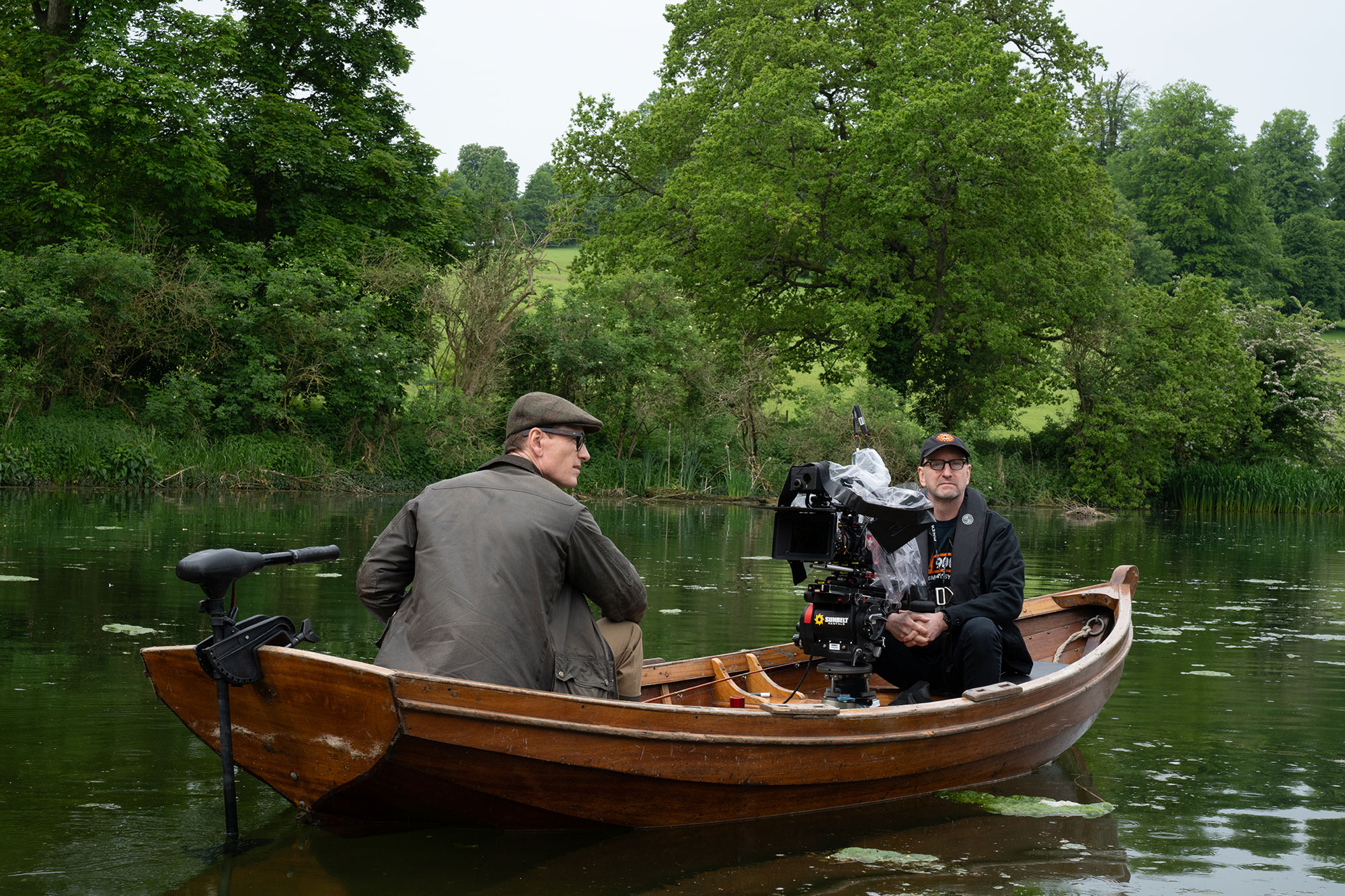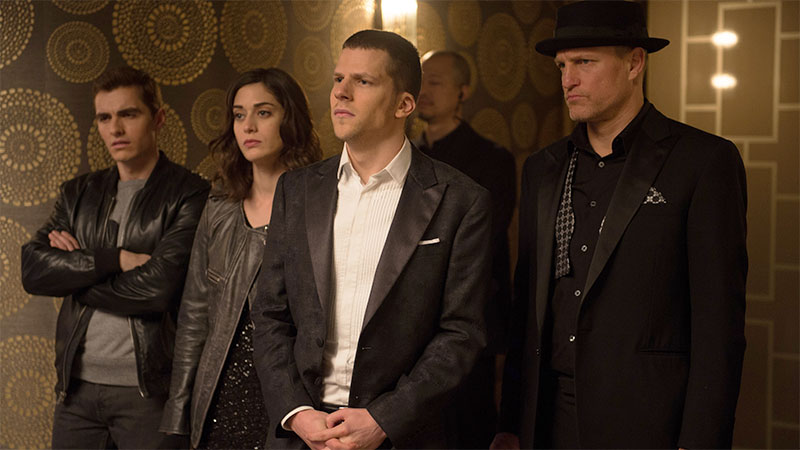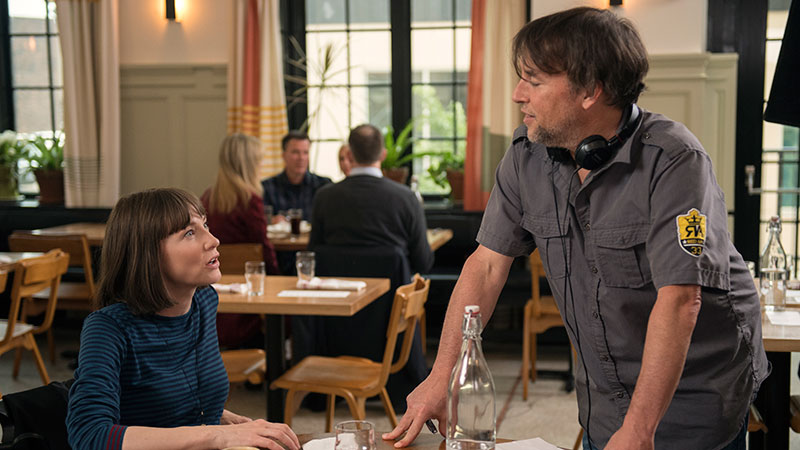Steven Soderbergh and screenwriter David Koepp’s spy thriller “Black Bag” brings together an exceptional cast led by Michael Fassbender and Cate Blanchett to tell a story of espionage, betrayal, and marital loyalty. This sophisticated production, filmed across London and Zurich, represents the third collaboration between the acclaimed director and writer, following “KIMI” and “Presence.”

The inspiration for Fassbender’s classic look was Michael Caine circa 1970, particularly in a movie
called X, Y & Zee, but reimagined for 2025.
Origins and Concept
The idea for “Black Bag” first emerged during Koepp’s research for the original “Mission Impossible” film. While interviewing intelligence operatives, he became fascinated not just by tradecraft but by the complicated personal lives these spies led.
“All the spycraft stuff was very cool, but I learned more than I ever expected about the people,” Koepp explained. “One woman told me that her job made it impossible for her to sustain a relationship.“
This insight sparked a central theme that would define the film: “When you can lie about everything, how do you tell the truth about anything?” This question became the foundation for the complex relationship between the film’s central characters, George Woodhouse (Fassbender) and Kathryn St. Jean (Blanchett), elite British intelligence officers who are also passionately in love with each other.
Soderbergh was drawn to Koepp’s intelligent screenplay, seeing an opportunity to create a commercial yet sophisticated film in the vein of his “Ocean’s” franchise. The director suggested relocating the story from the United States to the United Kingdom, where the main characters would work for the National Cyber Security Centre (NCSC).
“It just felt like a fresher location for this story, if only because there seem to be so many series and movies set in the American intelligence world,” Soderbergh noted. “London is a city I find very cinematic.“
A Different Kind of Spy Story
While “Black Bag” features the hallmarks of a conventional espionage thriller—including a dangerous cyber weapon called Severus that could destabilize nuclear facilities—the film’s core is the relationship between George and Kathryn.
“Severus functions as an inciting incident, but more importantly, it’s a way to talk about what you do if you think your spouse is violating the unspoken agreement that you made with each other,” Soderbergh explained.
Koepp added, “At times, ‘Black Bag’ becomes more like ‘Who’s Afraid of Virginia Woolf?’ than ‘Mission: Impossible.’ That’s a big part of what audiences will respond to.“
The Perfect Casting
For the film’s leads, Soderbergh brought together two powerhouse actors in Michael Fassbender and Cate Blanchett. Fassbender had previously worked with Soderbergh on “Haywire” (2011), and the director had been eager to collaborate with him again.
“I knew he wouldn’t be afraid to play the interiority of George,” Soderbergh said. “He burrowed in deep while creating a calm surface that masks a lot of turbulence.“
Fassbender was immediately drawn to the project: “I read the script and said I’m in. George is a very traditional, old-school character and quite an obsessive guy, so the small things were very important.“
For Kathryn, Soderbergh needed an actress with both extraordinary acting talent and a touch of old-fashioned Hollywood glamour. “Cate just has both these qualities,” he said. “Over the years, she’s always kept in touch to find out if there is anything we might work on together.“
Blanchett was equally enthusiastic about joining the project. “I just said, ‘Who am I playing?’ It was written by David and directed by Steven. That’s all I needed to know,” she recalled. “The marriage was something I had not seen before. George and Kathryn would literally kill for each other, which is a good premise for a movie, particularly one dealing with spies.“
The London Production
“Black Bag” was primarily shot at Pinewood Studios and on location in central London. One of the most challenging aspects of the production was creating George and Kathryn’s home—an elegant London townhouse that would serve as the setting for key scenes.
Unable to find a real location that met their requirements, production designer Philip Messina constructed a two-story brick and mortar house on a soundstage at Pinewood. The design emphasized sightlines that left nowhere to hide, a metaphorical choice for a film about secrets and deception.
“Steven didn’t want flyaway walls,” co-producer AJ Riach explained. “It needed proper ceilings. He wanted it to feel and function like a real house. You could pick it up and put it in central London, which is a testament to Phil and his team.“
Soderbergh and Messina also faced challenges in creating the offices of the NCSC. The designer used three different London locations, including the Financial Times building for the lobby and a site called The Rowe for the analysts’ area. For authenticity, the production team visited the actual NCSC headquarters in London.
“Being able to access an actual workspace supplied us with an authentic aesthetic that tied the locations together,” Soderbergh said.
Filming in Zurich
The production also traveled to Zurich, Switzerland, working with local production company Hugofilm Features. Scenes were shot at several notable locations, including Münsterhof and Zurich Airport.
“We immediately started getting the pieces of the puzzle together,” Riach said of the Zurich portion of the production. The team worked with local crews and extras to capture the sophisticated European atmosphere that contributes to the film’s globetrotting spy aesthetic.
Soderbergh’s Distinctive Style
True to his reputation, Soderbergh operated the camera himself for much of the shoot, creating a fluid, intimate shooting style. This approach was particularly evident in the pivotal dinner party scene, where he removed the center of the dining table to shoot the actors from that viewpoint.
“Steven was operating the camera most of the time,” Blanchett explained. “Having it at the center of the table allowed him to shoot people from a very particular, paranoid angle. The camera could be moved up and down, so he could do many perspectives depending on who was looking at whom at any given point.“
Costume designer Ellen Mirojnick and makeup and hair designer Frances Hounsom worked to create a refined, timeless look for the characters. For Fassbender’s George, the inspiration was Michael Caine circa 1970, particularly in the film “X, Y & Zee.” Blanchett’s usually blonde locks were transformed with a long, dark wig, giving Kathryn a distinctive appearance.
Working with the Experts
To ensure authenticity, the filmmakers consulted with real-life spies from GCHQ/NCSC’s parent organization. Cast members, including Fassbender, Burke, Abela, Brosnan, and Page, met with intelligence operatives who could only provide their first names.
“We all felt that ‘Black Bag’s’ depiction of NCSC HQ is a mix of accuracy, including the red exterior tinges and triangular shapes of the real building, with cinematic flair,” noted one consultant identified only as Sam.
A Different Take on the Spy Genre
While the film contains action sequences and high-stakes espionage, Soderbergh and Koepp aimed to create something more psychologically complex than the typical spy thriller.
“Fast-moving, clever and surprisingly funny, ‘Black Bag’ should first and foremost be entertaining,” Soderbergh stated. “To be good and to be smart and also fun is a worthy goal—but nowhere near as easy as it sounds.“
Koepp hopes the film will intrigue audiences beyond the usual thriller expectations. “I’d love people to come out of this movie wondering if the spy world really is like this,” he said. “Myself, I have reason to believe that it is. Then of course we all will want to talk about things like who’s sleeping with whom.“
With its star-studded cast, sophisticated storytelling, and Soderbergh’s distinctive visual style, “Black Bag” promises to deliver a fresh take on the espionage genre—one that examines the personal costs of deception as much as the high-stakes world of international intelligence.




